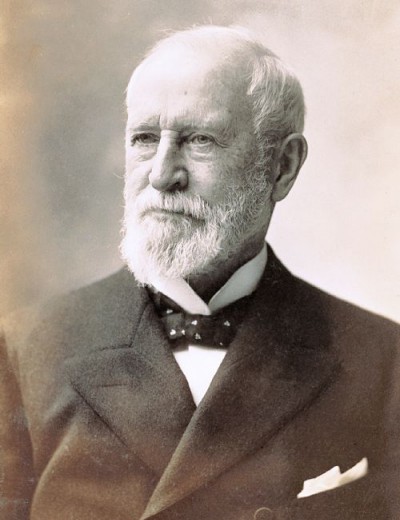
Charles Lewis Tiffany
About
Charles Lewis Tiffany (February 15, 1812 – February 18, 1902) founded Tiffany & Co. in New York City in 1837. A leader in the American jewelry trade in the nineteenth century, he was known for his jewelry expertise, created the country's first retail catalog, and, in 1851, he introduced the English standard of sterling silver.
His son, Louis Comfort Tiffany, was a decorative glass and lamp designer famous for his stained glass windows and art glass.
In addition to his business, Tiffany was a patron of the Metropolitan Museum of Art and one of the founders of the New York Society of Fine Arts.
Tiffany's Upper East Side townhouse, designed by McKim, Mead, and White, once stood on the current site of the Ralph Lauren Polo Sport boutique across from the now-famous Rhinelander Mansion.
Born in Killingly, Connecticut on February 15,1812, Tiffany was educated in a district school and in an academy in Plainfield, Connecticut. Starting at the age of 15, he helped manage a small general store started by his father, the owner of a cotton-manufacturing company. Charles Tiffany later worked at the office of his father's mill. The Tiffany family descendend from Humphrey Tiffany, who had lived in the Massachusetts Bay Colony in 1660.
In 1837, with $1,000 borrowed from his father, Tiffany and a school friend, John B. Young, set up a small stationery and gift shop in New York City. Their first three days in business brought them only $4.38 in total sales, but two years later they were still in business, selling glassware, porcelain, cutlery, clocks and jewelry. On November 30, 1839, he married John B. Young's sister, Harriet Olivia Avery Young (1816 - 1897) with whom he had two children, Louis Comfort Tiffany and Annie Olivia Tiffany (Mrs. Alfred Mitchell; mother-in-law to Hiram Bingham III).
The store expanded in 1841 and changed its name to Tiffany, Young and Ellis. It established a reputation for selling only the finest goods and specialized in Bohemian glass and porcelain. It also began manufacturing its own jewelry. In the early 1850s, the company was reorganized under the name Tiffany and Company and opened branches in Paris (1850) and London (1868). The store also relocated uptown to a Fifth Avenue location in that decade.
Tiffany was terribly embarrassed in an 1872 diamond and gemstone hoax perpetrated by Philip Arnold that cost investors more than half a million dollars.
Another great achievement in his life was when he teamed up with Thomas Edison and together they created foot lights and other ways of electrically lighting theaters. As a result of this, Broadway and other shows became more popular during that time.
The firm acquired and sold some of the French crown jewels in 1887, firmly establishing its reputation.
At his death in Yonkers, New York on February 18, 1902 at the age of 90, Charles Tiffany's company was capitalized at more than $2 million and acknowledged as the most prominent jewelry company in North America.